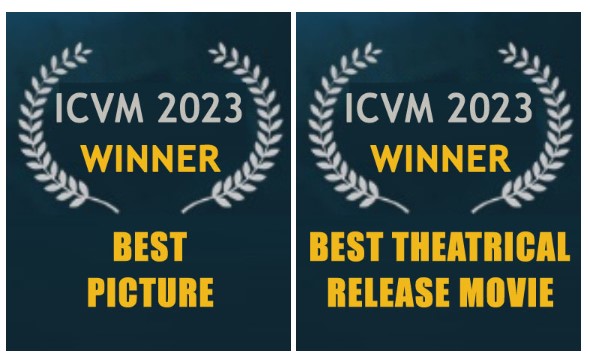LINK to a path of success, On MCAT preparation by Dr. Ming Wang, Harvard & MIT (MD)
Many years ago, Dr. Ming Wang, Harvard & MIT (MD, magna cum laude); UMD (PhD, laser physics), the subject of the film “Sight” (FREE link: https://sight.drmingwang.com/), came to the classroom of Princeton Review of Nashville, on the invitation of its director Mr. Wade McKinney, to speak to students about preparation for MCAT. MCAT stands for Medical College Admission Test, which is regarded as the single most important exam for medical school application in the US today. Upon hearing about Dr. Wang's own success in MCAT and his years of experience in teaching MCAT at Stanley Kaplan Educational Center, Mr. McKinney decided to invite Dr. Wang to speak to the students who are preparing for the exam through the Princeton Review Nashville system.
"The most important thing that I want to share with you today is the concept of linking", Dr. Wang began his lecture. In late 1980's, with almost no pre-med course preparation and minimal extracurricular activities, Dr. Wang studied for MCAT himself and achieved full scores in all science subjects and an overall MCAT score ranked in the top 0.001% in US that year. He admitted to both of the top two medical schools in the U.S., Harvard Medical School and Johns Hopkins. Partly due to the racial discrimination that he experienced at Hopkins in his medical school application process (a story was described in his autobiography “From Darkness to Sight” and also told in the film “Sight” (FREE link: https://sight.drmingwang.com/), he went to Harvard and MIT joint program and in 1991 graduated with MD magna cum laude from Harvard and MIT with a graduation thesis that won the first place of Harvard Medical School that year.
Today, Dr. Wang is one of the few cataract and LASIK surgeons in the world today who holds a doctorate degree in laser physics. He has performed over 55,000 procedures including on over 4,000 doctors. Dr. Wang published 10 textbooks and a paper in the world-renowned journal Nature, holds several U.S. patents and performed the world’s first laser artificial cornea implantation. He is the only surgeon in the state who performs SMILE (18+, small-incision LASIK), Forever Young Lens Surgery (45+, to get rid of reading glasses) and LASER Cataract Surgery (60+). He received the honor award from American Academy of Ophthalmology and the Lifetime Achievement Award from Association of Chinese American Physicians.
Dr. Wang invented amniotic membrane contact lens (AMCL), donated his patents, and went around the world and probonoly taught over 10,000 eye doctors how to use the new technology. Today, AMCL is a $5 billion USD industry worldwide, and doctors from nearly every nation are using it and millions have had their eyesight restored.
Dr. Wang founded a 501c(3) non-profit charity the Wang Foundation for Sight Restoration which to date has helped patients from over 40 states in the U.S. and 55 countries with all sight restoration surgeries performed free-of-charge, including many blind orphan children.
For 10 years, Dr. Wang taught thousands of students how to study and score high in MCAT at Kaplan and at Princeton Review, and he believes that he has found a system for that.
"My 'system is' that you need to LINK the knowledge that you are studying", Dr. Wang explained. MCAT tests primarily the students' ability to reason and logically deduce. The test is not interested in testing a student's memorization of facts, but is mainly focused on testing a student's ability to think, reason, and logically come up with a solution to a problem, with minimal need of any memorization of facts. Dr. Wang said that MCAT is designed this way is in response to the requests from medical schools that the most important preparation that MCAT can help make for the new generation doctors is to train their ability to think and logically reason, based on a given set of information. In the future, when these students graduate from medical school and practice medicine, they are then best prepared since they have acquired a strong ability to reason and logically deduce, based on a patient's specific and unique set of situation, and come up with a tailored treatment plan for that particular patient.
"The best way to train yourself to reason and think is to improve your ability to LINK, connecting seemingly different facts and sets of knowledges through an common scientific principle that unit them all", Dr, Wang said. Dr. Wang gave an example of the difference in infection process of a bacteria and virus, namely, one is extracellular and one relies upon intracellular mechanism. Dr. Wang then asked: "Can you all name other examples in science, in which processes are differentiated based intra- and extra-celluar mechanisms?" Dr. Wang then went on and pointed out that in pharmacological drug actions, there is such differentiation, namely, some drugs such as penicillin principally acts extracellularly, while some other drugs such as steroid mainly works by intracellular mechanism.
Through this example, Dr. Wang explained his "system" of LINKING. When one comes upon the difference in infectious processes of bacteria and virus, do NOT rush through the study and go on to the next topic. You will forget about what you studied quickly and you gain very little in the understanding of the fundamental principles and learn very little about training of one's reasoning and logical deducement ability. Instead, Dr. Wang encouraged the students: "After you completed your study of bacteria and virus, for example, don't rush, pause, and think, and ask yourself an important question: "What is the underlying principle that separate the ways that a bacteria and virus infect? Can I find other examples in biology, physics and chemistry, that processes are distinguished from each other based on a similar principle?"; Upon pausing, thinking and reasoning, the student will then figure out that the fundamental difference between the bacteria and viral infectious processes is extra versus intra-celluar ways of infection, and upon searching for "links" to other branches of science, the student then discovered that drug interaction with cells shares the common fundamental features, namely intra versus extra-celluar mechanisms.
"LINKING and training of yourself the ability to link is the first and single most important step to improve your ability for logical deducement and think", Dr. Wang emphasized. In order to link to other facts, one has to first think deeper and identify the underlying principle of the study subject at hand. This process helps one summarize and identify the gist of what one is studying. Then, utilizing the underlying principle so identified, one then search other branches of sciences for observations and factors that, though seemingly dissimilar and disparate on the surface, actually share the same common underlying principle of action, just like bacteria and virus on one hand, and drug action on the other.
"The only way to link these observation is to first identify the underlying principles, and that, is the very purpose of linking", Dr. Wang concluded. Studying the principles and logics behind scientific fact and trains one's ability to reason and solve a problem given a set of known information is the most important preparation for tomorrow's physicians.
That is why no wonder the testing of a student's ability to think and reason is what MCAT is primarily tested in.
And, to score high in MCAT, to train one's ability to LINK is the first and most important pearl.
About Dr. Ming Wang:
Dr. Ming Wang is a Harvard & MIT graduate (MD, magna cum laude) and is one of the few laser eye surgeons in the world today who holds a doctorate degree in laser physics.
The film “Sight” (FREE link: https://sight.drmingwang.com/), the first first-generation Chinese American immigrant film in American mainstream media, is based on Dr. Wang’s autobiography “From Darkness to Sight”, co-starring Greg Kinnear.
As a teenager, Ming fought poverty and hardship in China and came to America with only $50 and earned two doctorate degrees, one in laser physics and one in medicine, and graduated with the highest honors from Harvard Medical School and MIT.
Amniotic membrane contact lens, which Dr. Wang invented and for which he holds two U.S. patents, has been used by tens of thousands of eye doctors in nearly every nation throughout the world, and millions of patients have had their eyesight restored. Wang Foundation for Sight Restoration has helped patients from over 40 states in the U.S. and 55 countries, with all sight restoration surgeries performed free-of-charge. Dr. Wang was named the Kiwanis Nashvillian of the Year for his lifelong dedication to help blind orphaned children from around the world.
To reach Dr. Wang: This email address is being protected from spambots. You need JavaScript enabled to view it. , www.drmingwang.com , wechat: ballroom123





